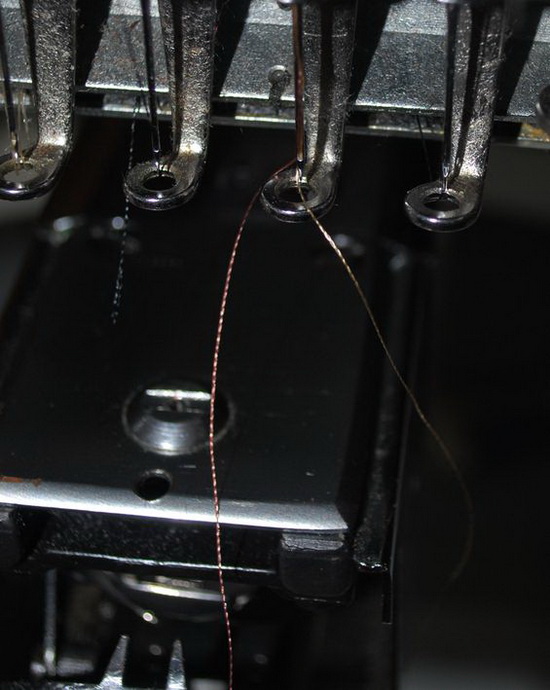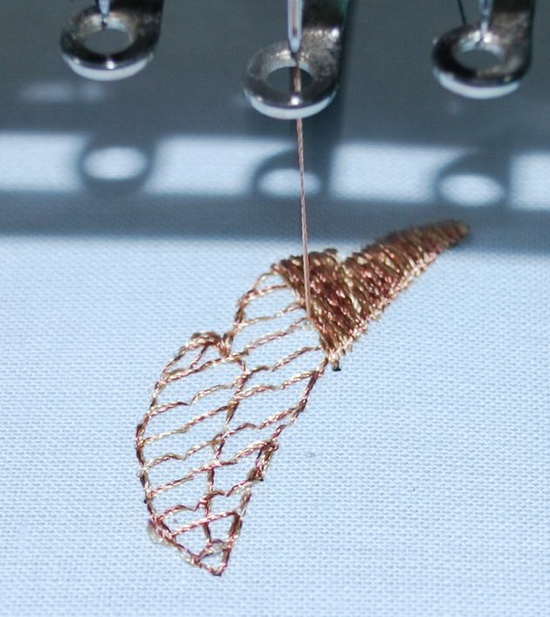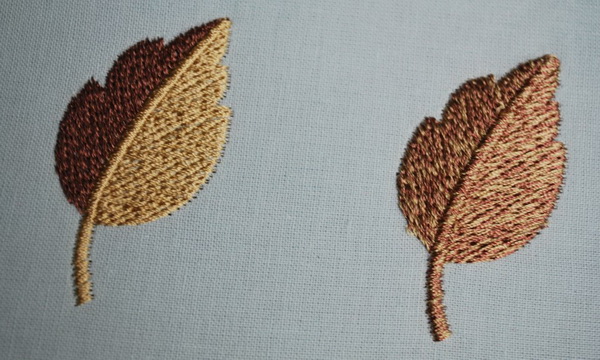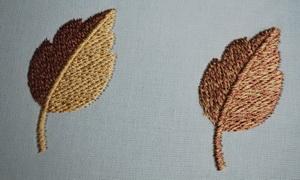Original text by Marina Belova
I've long wanted to embroider with two threads in one needle, being mighty curious how the whole thing would turn out. So a couple of days ago I saw a video on Gunold's Youtube channel in which Debora Jones demonstrated the way of doing it and shared basic recommendations for those who are going to repeat it on their own machines.
Below are her recommendations to which I added a few things that could be guessed from the context:
- Use standard #40 rayon or polyester threads.
- A 90/14 needle has a large enough ear to accommodate both threads. The point type depends on the type of fabric, I suppose.
- You should increase the thread tension to prevent looping.
- And reduce the design's density by at least 20%.
- The issue of underlay wasn't specified but the understitching was present, therefore, you'd better use it. I also think that the stitch length should be increased in relation to the standard one.
- The important thing to remember is that a thread supply failure detector won't work in this case because the second thread will remain intact even if the first one snapped.
- In my opinion, pull compensation needs to be increased substantially, for two threads will distort a design a great deal in spite of the reduced density.
What else one needs to do to master this not too complicated a skill, according to the video in question? Not much – to create a design in the way that was suggested and go to the machine:
So I threaded my needle with 2 threads:

Adjusted the tension – I had to tighten all the screws all the way in so that to prevent loops – and went to the machine:

Nevertheless, there were some loops during the embroidery of the twig (done with satins). The leaf is very puffy and looks like it had been embroidered with a multicolor thread made of 2 different strands (below on the right). Judging from the result, the stitch density could be reduced even more that by 20%. For reference, here is the same leaf embroidered with one thread at a time – each half with a different color. I used my standard density values (below on the left):

The most interesting aspects of this technique are:
- You can choose the colors you like and not the ones in the multicolor palette.
- You don't need to use (almost) any special tricks when digitizing in order to successfully mix the two colors.
- This technique is excellent for the embroidery of flowers, leaves, hair (fur) and whenever you need things to look natural.




Recommended Comments
Join the conversation
You can post now and register later. If you have an account, sign in now to post with your account.